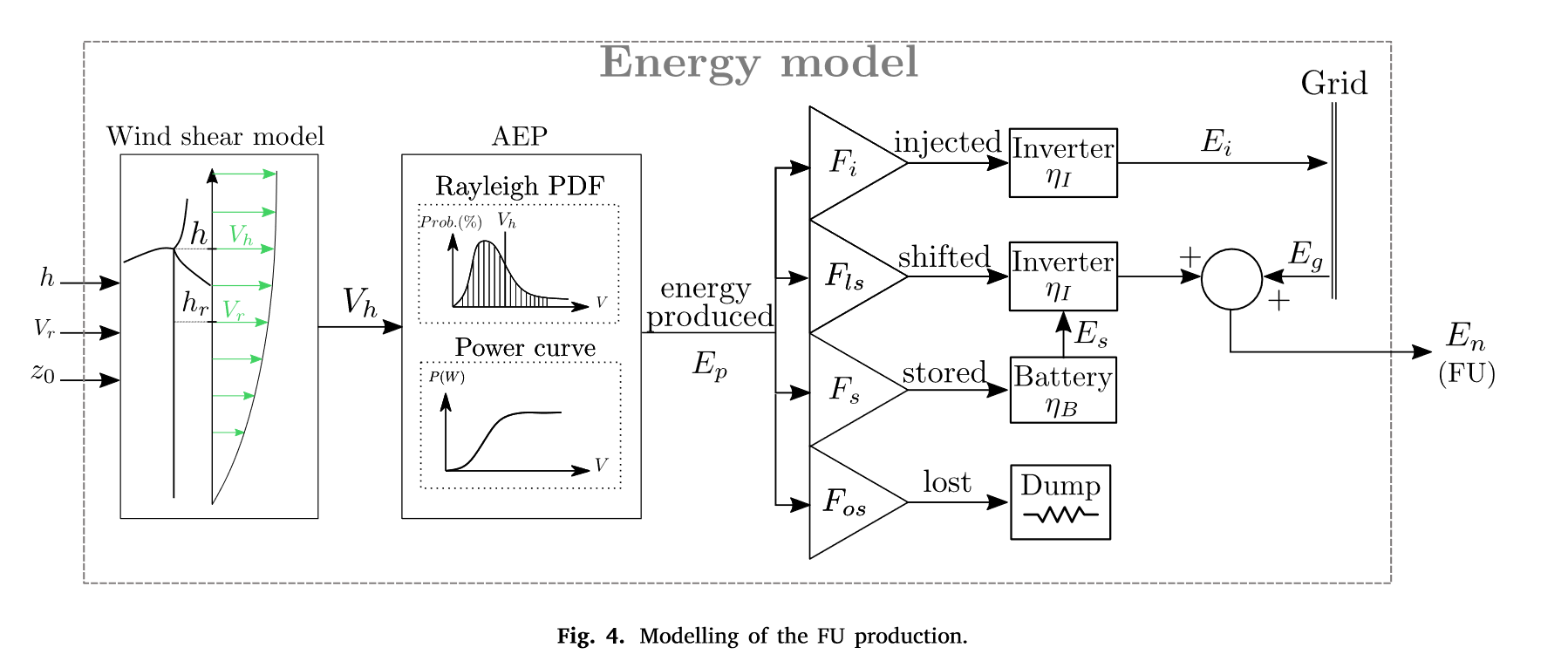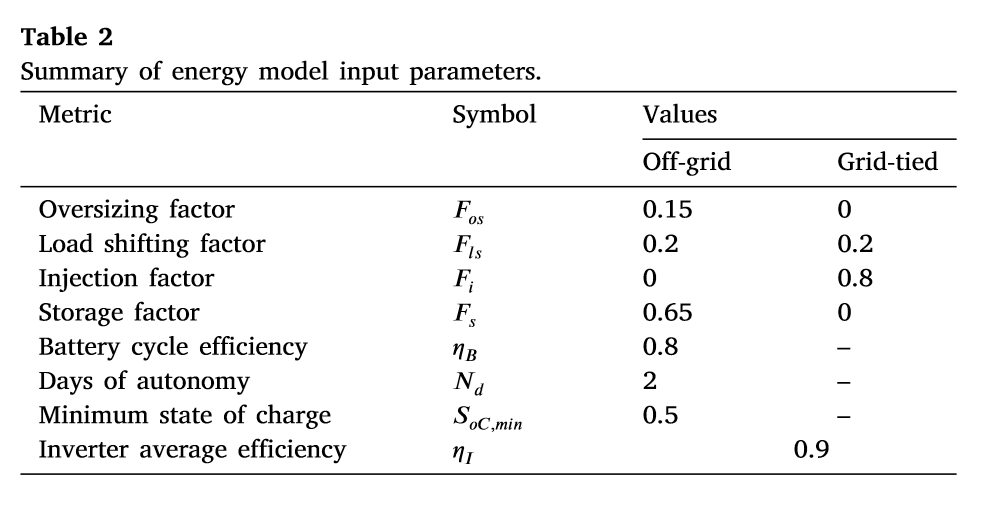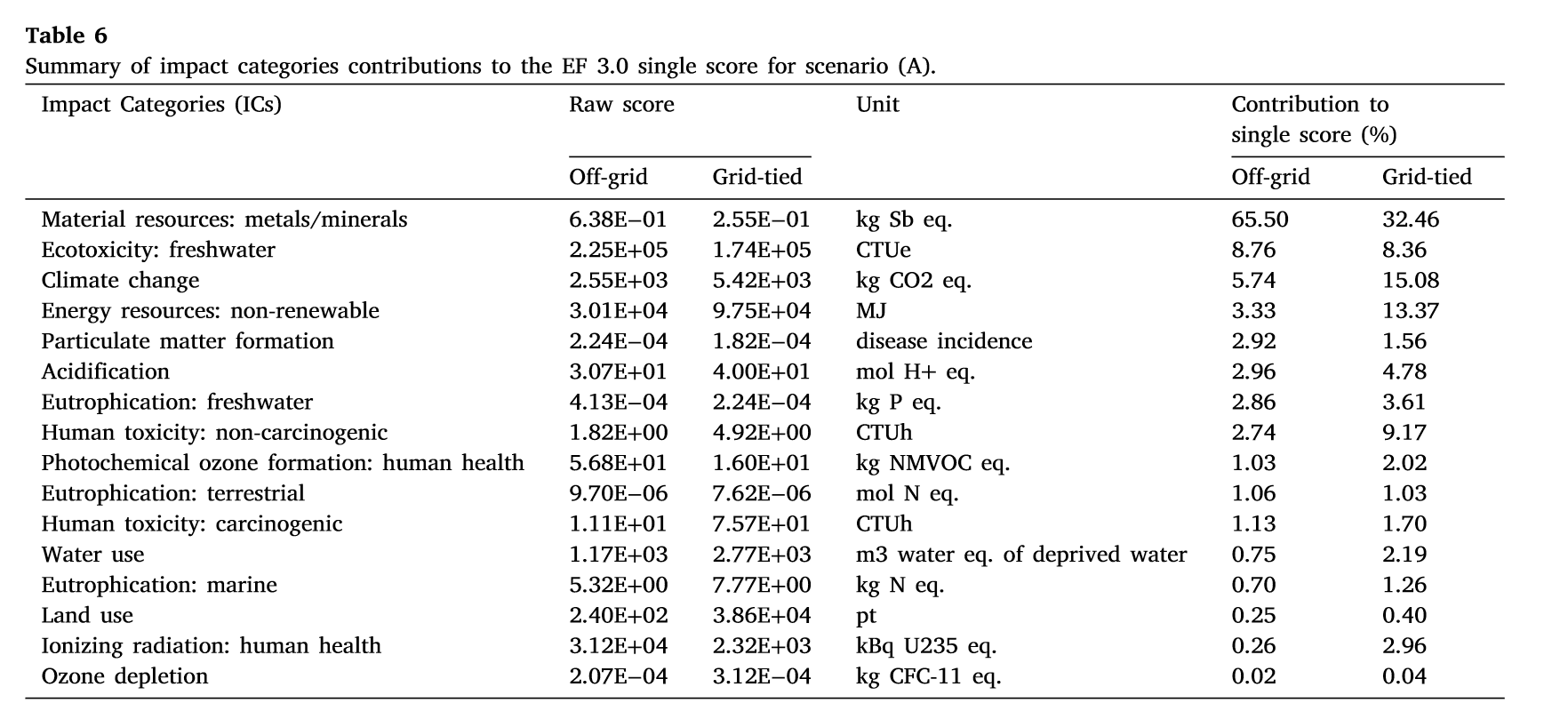A framework for technico-environmental optimization of small wind turbines
Formatted citation: [1] A. Prévost, F. Demichel, V. Léchappé, H. Helbling, R. Delpoux, and X. Brun, “A framework for technico-environmental optimization of small wind turbines,” Applied Energy, vol. 377, p. 124502, Jan. 2025, doi: 10.1016/j.apenergy.2024.124502.
Collections:: Climate change
| title | proxy note | desktopURI |
|---|
My notes
The study analyzes the environmental footprint of Small Wind Turbine (SWT) technology, offering a comprehensive techno-environmental analysis framework. Having participated in a workshop on Piggott wind turbines self-construction in 2023, I find the study’s insights particularly interesting.
The framework takes into account site-specific characteristics and compares off-grid and grid-tied system configurations. It reveals that the off-grid configurations, while more material-intensive, are less carbon-intensive and toxic than grid-tied systems.
The battery system, essential for off-grid setups, has a significant environmental impact. The user’s daily energy needs directly influences battery requirement. For grid-tied systems, reducing grid electricity use by shifting the daily energy need is crucial.
What the study’s insights may suggest is that, ultimately, technological optimization can influence environmental impacts only through optimization of user behavior.
Imported
Notes
Annotations
⬇️Imported (Annotations) on 2025-01-04#12:27:50⬇️
In the previous publications about LCA of SWT systems, the energetic model is constructed under the assumption that all the energy produced is consumed or avoids the consumption of a kWh on the grid [10,13,15,28]. This assumption is not realistic regarding what is happening on the field, where part of the energy can be stored or lost. (p. 2)
The source code of the model and the map are provided online [31] to enable reproducibility and collaboration. (p. 2)
This energy need scenario includes the use of lighting (176 Wh/day), a radio (30 Wh/day), a laptop (100 Wh/day), a washing machine (600 Wh/day) and other electrical tools (500 Wh/week) [33]. (p. 2)

The FU, denoted 𝐸𝑛, corresponds to the average daily energy need of the user in kWh of AC electricity. (p. 4)
The energy 𝐸𝑝 produced by the wind turbine is computed with a wind shear model and the Annual Energy Production (AEP), as recommended by the IEC-61400-2 standard [42]. (p. 4)
The Rayleigh PDF implies that for 𝑉ℎ > 6 m∕s, the majority of the energy contained in the moving air belongs to wind speeds above 10 m/s, where the SWT enters in the zone III. (p. 5)
For both configurations, 𝐹𝑙𝑠 = 1 means that the totality of the energy need 𝐸𝑛 are satisfied by the instantaneous production of the wind turbine. This can be seen as an ideal case where there would be no need of battery storage nor grid electricity. (p. 5)
This phenomenon is quantified with an over sizing factor 𝐹𝑜𝑠 which represents the proportion of energy being lost in the dump load. (p. 5)
According to a field expert in France (Ti’Eole company), this amount can reach up to 30% of the wind turbine energy production. (p. 5)

Although not abiding exhaustively by the rules of ISO 14040/14044 standards, the methodology used in this work follows the same four steps structure. (p. 6)
The LCI was implemented on Brightway 2 [53] using the Ecoinvent 3.8 database. (p. 6)
It was evidenced in the literature that the inclusion of the End of Life (EoL) phase including recycling, and energetic recovery could greatly decrease the environmental footprint of a wind turbine system [10]. (p. 7)
The pedigree approach [58] was however used to attribute uncertainties on quantities for each process when relevant, which could serve a future analysis. (p. 8)
Urban areas were excluded from the study since many works have already shown the irrelevance of putting SWTs in such environments. (p. 8)
The outcome shows that, despite (B) having a higher score than (A), the ENF is lower for (B) (−7% and -8% of relative difference for off-grid and grid-tied respectively). This means that the configuration (B) is more environmentally efficient than (A) at producing the FU. However, great care should be taken with this metric since overall scenario (A) is responsible for fewer impacts than (B) which in the end is more environmentally friendly. (p. 9)
According to the results, the off-grid configuration is about two times more material intensive but about two times less carbon intensive, three times less non-renewable energy intensive and seven times less toxic for human health than the grid-tied configuration. (p. 9)

This indicates clearly that the sizing of the battery bank is a potential key leverage to reduce the environmental impacts of an off-grid system. Since in off-grid configuration, the more energy is produced, the more storage capacity is needed, the impacts of the system will strongly depend on the user daily energy need. In a similar logic, minimizing the electricity withdrawn from the grid appears as a key leverage to reduce the impacts of a grid-tied system. This could be achieved with load-shifting. A certain trade-off appears between the two configurations: off-grid tends to offer more material intensive energy due to the batteries whereas grid-tied tends to offer more carbon intensive energy, due to the European grid energetic mix. (p. 11)